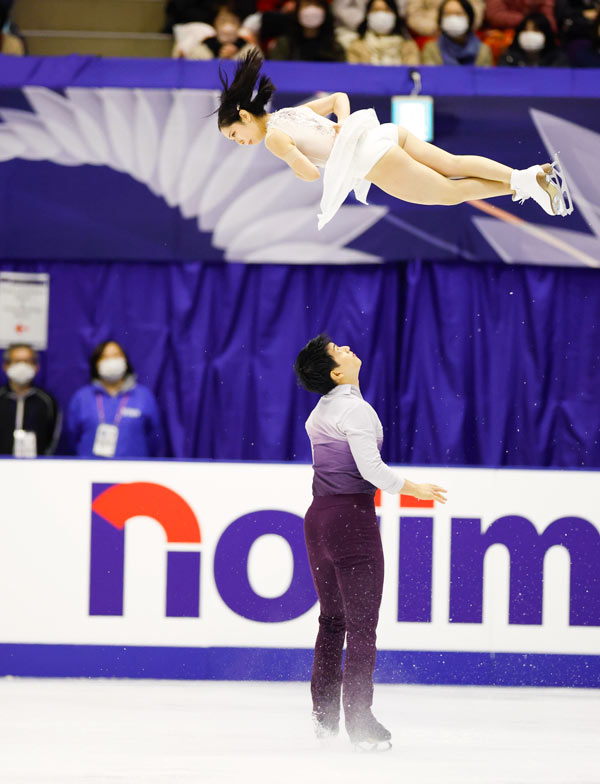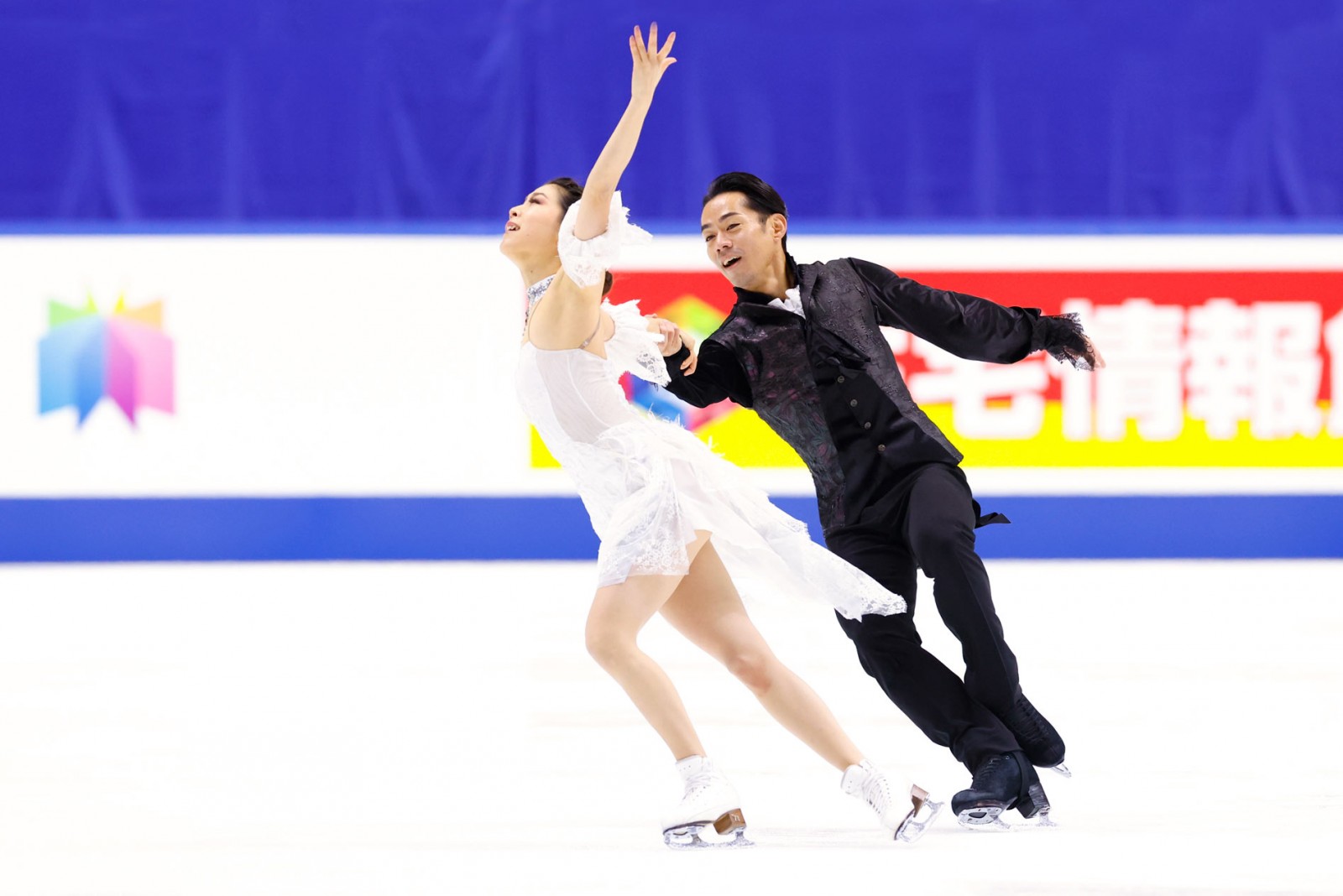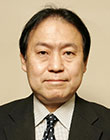The many talented competitors today, spearheaded by Kaori Sakamoto and Shoma Uno, are just the latest group of a long and illustrious line of figure skating legends Japan has produced, as described here in the second half of this article.
We use cookies to optimize and continuously improve our website for individual users. By closing this banner or continuing to view the website, you are agreeing to the use of cookies for this purpose, as detailed in our Privacy Policy.
The many talented competitors today, spearheaded by Kaori Sakamoto and Shoma Uno, are just the latest group of a long and illustrious line of figure skating legends Japan has produced, as described here in the second half of this article.
As a sport, figure skating literally began with the drawing of circles and other figures on ice, developing primarily in the Netherlands and Britain from around the middle of the nineteenth century. It was not until American Jackson Haines added music and choreography in the 1860s, though, that it came to be characterized by the expressive, dance-like style seen today. The first skaters in Japan were expatriates who, around 1890, started gliding over a frozen pond in the northern city of Sendai, and this pastime was introduced to local children a few years later.
By the end of the Meiji period (1868–1912), students of what is now Tohoku University in Sendai began teaching the skating techniques they had learned from their foreign instructor to people throughout Japan, and an association established by figure skating enthusiasts in 1920 began organizing skating competitions. In 1929, the newly established Japan Skating Federation held its first all-Japan championships.
An early pioneer among women figure skaters was Etsuko Inada. Born in 1924, she started skating at the age of 8, became the all-Japan champion at 11, and competed at the 1936 Garmisch-Partenkirchen Games after just turning 12—the youngest-ever Japanese Olympian to date. She later became a renowned coach, developing such top skaters as Junko Hiramatsu (née Ueno) and Miwa Fukuhara, who competed at the 1960 Games in Squaw Valley and at Innsbruck four years later.
Other world-class skaters over the years include Innsbruck and Grenoble 1968 skater Kumiko Sato (née Okawa); Kazumi Yamashita, who competed at Grenoble and Sapporo 1972; and Lake Placid 1980 competitor Emi Watanabe. Midori Ito won Japan’s first Olympic medal—a silver—at the 1992 Albertville Games; Yuka Sato became World Figure Skating Champion in 1994; and Shizuka Arakawa earned Japan’s first figure-skating gold at the 2006 Torino Games. Miki Ando won the World Championships in 2007 and 2011, and Mao Asada (see part 1) dominated the sport in the ensuing years.
Among more recent stars are Tomoko Miyahara, who retired from competition in April 2022; Rika Kihira, who injured her ankle and could not qualify for the Beijing 2022 Games; 2022 Grand Prix Final winner Mai Mihara; Beijing bronze medalist and 2022 World Champion Kaori Sakamoto; and 2022 Skate Canada International winner Rinka Watanabe. Up-and-coming prospects include 18-year-old Mana Kawabe, who competed at the Beijing Games and 2022 World Championships, and 14-year-old Mao Shimada, winner of the 2022 Junior Grand Prix of Figure Skating Final.
As for male skaters, an early standout was Kazukichi Oimatsu, who competed at Lake Placid in 1932 and Garmisch-Partenkirchen in 1936. Following World War II, Nobuo Sato represented Japan at Squaw Valley in 1960 and Innsbruck in 1964 and placed fourth at the 1965 World Championships, after which he developed many top skaters as a coach. The first Japanese male to win a medal in the World Championships was Minoru Sano, who earned a bronze at the 1977 World Championships in Tokyo after finishing ninth at the 1976 Innsbruck Games. His good looks also made him very popular.
Subsequent male skaters include Takeshi Honda, who performed at Calgary 1988 and Salt Lake City 2002, and Daisuke Takahashi, who finished eighth at Torino 2006, captured the bronze—the first-ever men’s singles Olympic medal—at Vancouver 2010, placed sixth at Sochi 2014, and also won the World Championships in 2020 and Grand Prix Final in 2012. Takahashi captivated audiences with his distinctive step sequences and artistic style. Although he retired in 2014, he returned to competition in 2018—this time, teaming up with Kana Muramoto in ice dance.
The top Japanese male skater following Yuzuru Hanyu’s retirement is Shoma Uno, who won the silver at PyeongChang 2018, bronze at Beijing 2022, and claimed the Grand Prix and World Championship titles in 2022. Close on Uno’s heels are Yuma Kagiyama, silver medalist at Beijing 2022; Sota Yamamoto, who placed second at Grand Prix Final 2022; and 17-year-old Kao Miura, who finished third at the 2022 Four Continents Championships. Nobunari Oda retired in 2013 after finishing seventh at Vancouver 2010, but the 35-year-old skater made a surprise announcement in September 2022 that he would return to competition.
Bright spots in international pair skating and ice dance, where Japan has not had much success thus far, are Riku Miura and Ryuichi Kihara—a pair-skating duo affectionally known as “Riku-Ryu.” The two placed seventh at Beijing 2022 and won the bronze at the World Championships later that year, the highest ever for a Japanese team. They went on to claim the title at Grand Prix Final 2022.

Riku Miura and Ryuichi Kihara at NHK Trophy 2022.
In ice dance, the “Kana-Dai” duo of Kana Muramoto and Daisuke Takahashi placed first at the 2022 All Japan Figure Skating Championships, defeating four-time champions Misato and Takeru Komatsubara. They will henceforth aim to reach the top-level at international competitions as well.

Kana Muramoto and Daisuke Takahashi competing at the 2022 All Japan Figure.
Kamila Valieva of the Russian Olympic Committee was a favorite at Beijing 2022 but became mired in a doping scandal after testing positive for a banned substance weeks before the Games. A fury erupted when the Court of Arbitration for Sport allowed the 15-year-old skater to compete, citing a provision in anti-doping rules that athletes under the age of 16 are “protected persons” and face lesser penalties. The controversy surrounding Valieva, who finished fourth after taking a fall, prompted the International Skating Union in June 2022 to gradually raise the minimum age for Olympic competition from 15 to 17. The decision means that competitors must be at least 17 before the figure skating season begins on July 1. Mao Shimada, mentioned above, will turn 17 in October 2025 and will thus be unable to compete at Milano Cortina 2026.
In September 2022, 17-year-old American Ilia Malinin became the first to land a quad axel during international competition in the men’s free program. He will be competing with Japanese skaters like Shoma Uno and Yuma Kagiyama for top honors at the Milano Cortina Games, scheduled for February 6 to 22, 2026.
Translated by the SSF from an article published in Japanese on February 21, 2022. Read part 1 of the article.

Shigeaki Matsubara
Shigeaki Matsubara was long in charge of planning and sales at sports photo agency Photo Kishimoto. After serving as Kishimoto’s executive director, he is now an adviser. He has covered many sports events, including the Olympic Games and the FIFA World Cup, and served as director general of the Japan Sports Arts Association, member of the expert committee on competition operations for the National Sports Festival, and member of the expert committee for the Nagano Olympics Culture Program. Currently serves as director and deputy secretary general of the Japan Sportsmen’s Club Foundation.